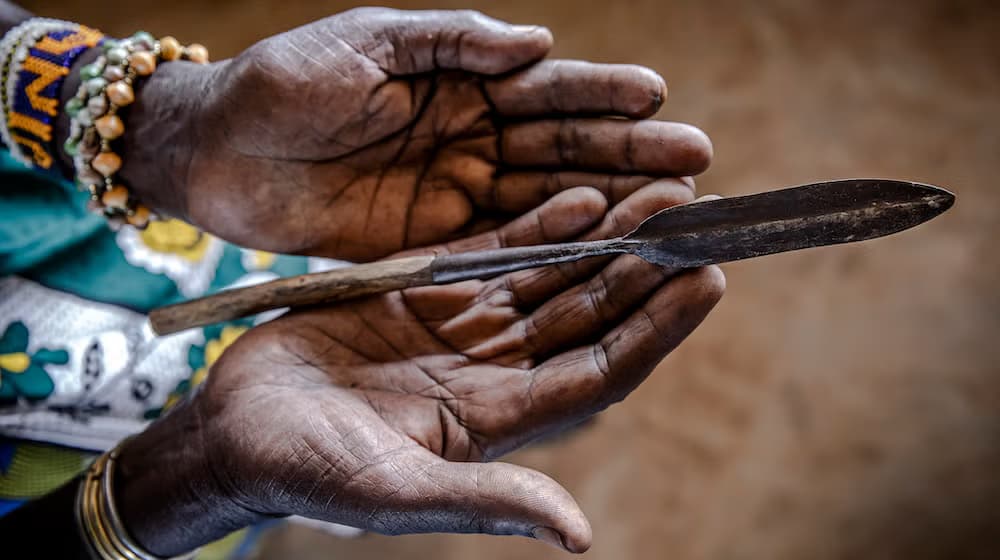Loading News Article...
We're loading the full news article for you. This includes the article content, images, author information, and related articles.
We're loading the full news article for you. This includes the article content, images, author information, and related articles.
Despite a national decline to 15% prevalence, Female Genital Mutilation is adapting, with practitioners now using secretive, medicalised, and cross-border methods to circumvent Kenya's robust anti-FGM laws.

NAIROBI – Kenya has marked a significant milestone in the fight against Female Genital Mutilation (FGM), with national prevalence dropping to 15% among women aged 15-49, according to the Kenya Demographic and Health Survey (KDHS) 2022. This represents a steady decline from 21% in 2014 and 38% in 1998, a testament to years of sustained government policy and civil society advocacy. However, front-line activists and law enforcement officials are warning of a dangerous new phase in this battle, as the practice is driven underground and practitioners adopt new tactics to evade prosecution.
Once a public cultural ceremony, FGM is now increasingly performed in secret. Bernadette Loloju, CEO of the government's Anti-FGM Board, stated in February 2025 that what was once a community celebration is now conducted covertly in private homes or remote locations to avoid detection under the Prohibition of Female Genital Mutilation Act of 2011. This landmark legislation imposes severe penalties, including a minimum of three years imprisonment and a KSh 200,000 fine for perpetrators.
The shift towards clandestine operations presents a formidable challenge for authorities. Three key trends have emerged: the medicalisation of FGM, performing the cut on younger girls, and crossing borders to evade Kenyan law.
Medicalisation, where the procedure is performed by healthcare workers, is a growing threat that creates a false sense of safety and legitimacy. A 2019 study by the Population Council found that some parents opt for medicalised FGM believing it is safer and has a shorter recovery period, while also serving as a direct response to the legal ban by keeping the practice hidden within clinical settings. Data indicates that 15% of FGM cases in Kenya are performed by health practitioners, a figure that rises dramatically in specific communities like the Kisii, where two out of three cases are medicalised.
Furthermore, practitioners are increasingly targeting younger girls, often between the ages of five and nine, making detection more difficult before they enter the school system. The most alarming tactic is the rise of 'cross-border' FGM. Communities living along Kenya's porous borders with Tanzania, Uganda, Somalia, and Ethiopia are transporting girls to undergo the procedure, exploiting weaker enforcement or non-existent anti-FGM laws in neighbouring territories. This trend is particularly noted among the Maasai, Pokot, and Kuria communities.
While the national average shows progress, the data reveals stark regional and ethnic disparities. The North Eastern region has a prevalence rate of 97.5%. Specific ethnic communities also show alarmingly high rates: 86.9% among the Somali, 75.9% among the Samburu, 70.9% among the Kisii, and 56.7% among the Maasai. In contrast, communities like the Luo, Luhya, and Turkana do not practice FGM. This highlights that FGM in Kenya is not a uniform issue but one deeply tied to specific cultural norms and ethnic identities.
The persistence of FGM is rooted in deeply entrenched social norms, where it is often considered a prerequisite for marriage and social acceptance. Uncut girls can face social exclusion, ridicule, and be deemed 'unclean' or incomplete, creating immense pressure to conform. These cultural beliefs are the primary drivers that sustain the practice despite its illegality and well-documented health consequences, which include severe pain, haemorrhage, infections, childbirth complications, and long-term psychological trauma.
The Kenyan government, through the Anti-FGM Board, continues to intensify its efforts. Public awareness campaigns, the promotion of Alternative Rites of Passage (ARP), and inter-ministerial coordination are key strategies. In November 2025, officials in Laikipia County, an FGM hotspot, launched a multi-agency team to protect girls during the school holidays, a period when cases typically surge. The government has also engaged in regional diplomacy, leading to a five-country declaration to combat cross-border FGM.
However, the enforcement of the Prohibition of FGM Act faces significant challenges. A December 2024 report by the American Bar Association and the Clooney Foundation for Justice's TrialWatch initiative found a disturbing trend where the law was disproportionately used to prosecute victims for 'failing to report' their own mutilation. The report, which reviewed 68 cases, found that over 55% of defendants were the women and girls who had been cut, while only 6% were the actual practitioners. This misapplication of the law risks further traumatising survivors and undermining the trust needed to eradicate the practice from within communities.
As Kenya pushes towards its goal of ending FGM by 2030, the battle is shifting from changing laws to confronting a deeply embedded cultural practice that is now adapting to survive. The focus for campaigners and authorities alike must now be on dismantling the underground networks, addressing the cultural drivers that give the practice its power, and ensuring that the laws designed to protect girls are not used to punish them.